More Odds & Ends: Ikoria
Last week, I began answering your questions about Ikoria: Lair of the Behemoths. You had a lot of questions, so I will continue answering them today.
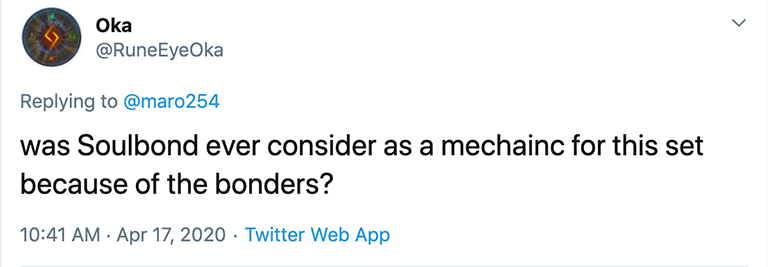
The first thing we tackled was the monsters, which meant we had mutate in the set very early on. Once we had mutate, we tried to stay away from other mechanics we thought would create more comprehension complexity (that is, confusion over how the mechanic essentially works). Soulbond holds the record for creating the most judging issues of any mechanic at a Prerelease (since we started tracking this metric), so even though it was a great flavor fit for bonders, it was never seriously a contender for inclusion in the set.

My favorite design story (that I haven't told already in this column) is probably about Mysterious Egg.
During vision design, you could only mutate a creature that matched in creature type or evergreen keyword (well, the ones we had made keyword counters for). To help guarantee that you would have an appropriate target for your mutate, we decided to make a colorless card that any creature could mutate from. We made it an Egg, because we liked the flavor—who knows what could come out of it. I believe the original version was an artifact, as a lot of former Eggs had been artifacts. The +1/+1 counter mutate trigger it had was the mutate trigger for all the commons and uncommons in the vision design file. When mutate changed during set design, this card could have gone away, but everyone liked the flavor of it, so it stuck around. The only change was it moved from being an artifact to a non-artifact colorless card for flavor reasons.

The Triomes (aka tricycle lands) were designed during set design. My best guess as to why they have basic land subtypes is that the "enters the battlefield tapped" tri-lands (seen in Khans of Tarkir) had some room to improve power-wise. Adding the subtypes made the cards more synergistic with other cards, especially in older formats.
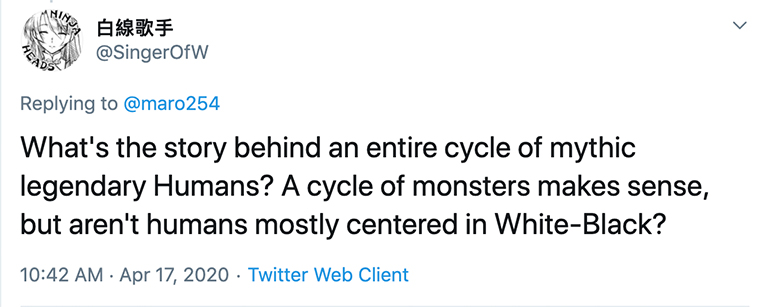
Don't confuse a mechanical theme with the entirety of worldbuilding. Yes, Human tribal is focused in white-black, but creatively, Humans exist throughout all the colors. The Humans play an important role in the monster world (as allies, enemies, and victims) and we wanted a legendary Human cycle to show off all those different relationships. Also, because so many of our players are humans, we've discovered many of them really like having Human commanders, so we make a lot.
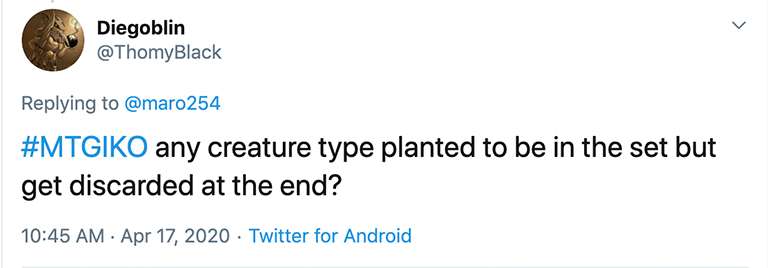
There were a lot of discussions about what the five core creature types should be for the set, but once those were settled on (which I believe happened during vision design), they stayed the same until print. There was a lot of talk, though, about making cool combinations of creature types, and that happened all through set design. I wasn't involved in that part, so I asked Doug Beyer, the person in charge of the creature types for Ikoria, if there was anything cool that didn't end up making it. Doug said that they entertained the idea of having a Kavu, but it just didn't seem distinctive enough from the Beasts and Dinosaurs, so they ended up passing on it.

Mutate is a complex mechanic. One of the things you have to be wary of when working with a complex mechanic is to try and minimize how complex it can get. While you can't control how it interacts with the 20,000-plus cards already printed, you can be careful about what cards have the mechanic. As such, we consciously did not make cards that granted mutate onto other cards as that would open up a Pandora's box of rules issues, including ones in Sealed, Booster Draft, and Standard, the main formats we safeguard.
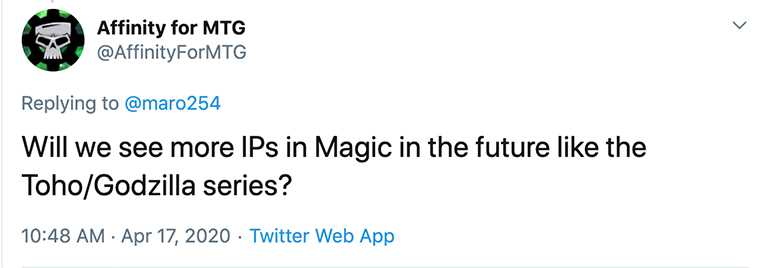
One of the reasons we did the Godzilla Monster Series promotion was to gauge audience interest in such a thing. We've tested the waters in the past with silver border (with cards like Grimlock, Dinobot Leader; Nerf War; Sword of Dungeons & Dragons; and Princess Twilight Sparkle), but we've never done it in black border. If it proves successful and initial data research is leaning in that direction, yes, it might be something we explore.

Any set, even one with a monster theme, can only hold so many large creatures. We chose our mechanics to maximize the opportunity to do large creatures and then let playtesting dictate where it made the most sense to spend our "large creature points." As cycling and large creatures will have many future opportunities to overlap, we prioritized other aspects of the set that wanted the larger creatures over cycling.
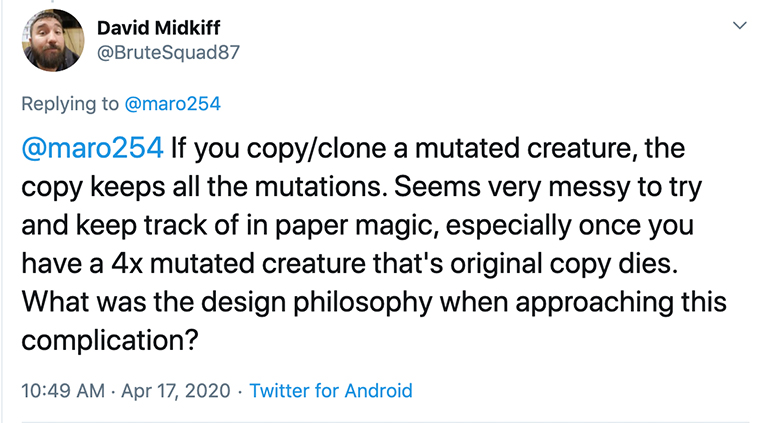
Two of the biggest issues we have to deal with when it comes to complexity is what I'll call intuitive issues and logistical issues. Intuitive issues boil down to "does this card work the way you expect it to?" When cards don't do what players think they will do, they are much more likely to play them wrong. Logistical issues boil down to "how easy is this to keep track of?" It focuses on how much busy work is required of the player to maintain the card while playing. Ideally, we want cards to be both intuitive to play and logistically easy to monitor.
The problem is Magic is a complex game with a lot of parts. For example, cloning (aka copying things, usually creatures) is itself very complex. In early Magic, we even stopped printing clone effects for a number of years as we couldn't get the rules to work consistently. Mutate, as I've pointed out above, is also complex. Combining these two things is just asking for trouble, but we don't have the option of not answering this question. Both exist in the game.
Usually, we start with the intuitive issues. What do players think will happen? If we can make the intuitive answer work, we try to. Yes, logistical issues are a real thing and something we care about a great deal, but getting players to play something that fights how they think it's going to work is an uphill battle. Sometimes we do that for significantly better gameplay or rules needs, but it's something we try to avoid when possible. In this case, the intuitive answer was clear. I copy a mutated creature. What do I copy? Everything. That's how copying usually works.
So, we stayed with the intuitive, consistent answer knowing there was a logistical cost. Luckily, it's something that will mostly happen in a Constructed format where the person opts into playing the deck. If the logistics is too much for someone, they'll probably play a different deck. Design doesn't always have easy answers. Sometimes you just have to choose the best option of the ones available.
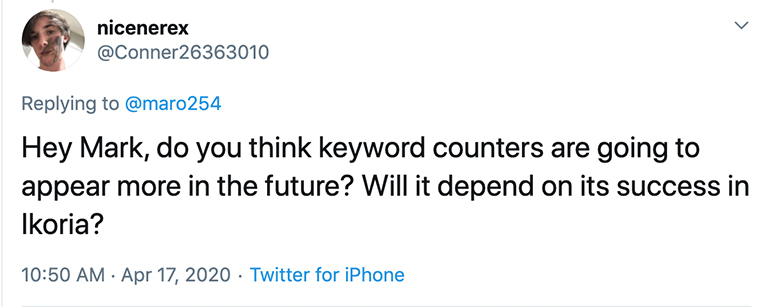
Yes, I think the future of keyword counters will depend on their reception in Ikoria. Note that they require punch-out cards to accompany them (otherwise the logistical cost is too high), so that will limit where we can use them. I will say I'm optimistic about their return.
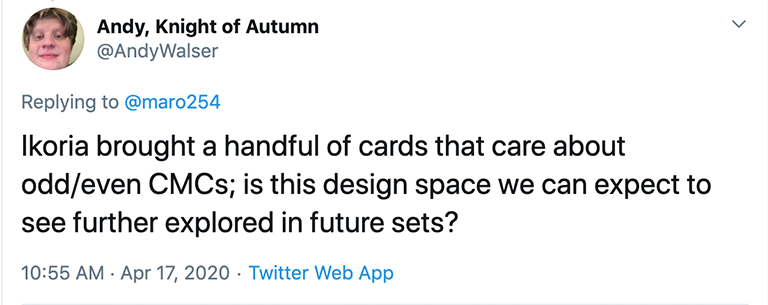
"Odd or even mattering" is a good example of a common problem game designers can fall into. On the surface, it seems like a very large vein of design. You could apply it to any mechanic. "Destroy target creature with an even converted mana cost." "Target creature gets +2/+2. If it has an odd converted mana cost, it gets +4/+4 instead." "As CARDNAME enters the battlefield, choose even or odd. All creatures you control of even or odd converted mana cost gain menace."
The problem comes when you actually examine how it gets played. Is caring about having odd cards fun? There's some novelty to it, and in small doses, novelty unto itself can be fun, but it's inherently not a fun thing to care about. Also, it's a quality that's hard to monitor. Can I easily tell across the table that your card has even or odd numbers? No. It's a weird thing to wrap your brain around, so the theme is naturally a little harder to play than normal. It doesn't lend itself to any flavor, so the decks don't have a creative conceit to them. When you add everything up, the promise of what the theme could be doesn't really live up to the potential it seems to have at first blush.
This is a long way of me saying that while I expect us to touch upon the theme again occasionally on a card-by-card basis (we make a lot of Magic cards), I don't think we'll be focusing on it as a larger theme unless we found some context where it naturally fits in, something that helps out with all the issues noted above. It's a mechanic that needs proper support, so I don't expect us to do it in large volume until we find a set that offers such support.

A lot of the ideas that didn't get used ran into deck-monitoring issues. That is, it was hard for your opponent to easily tell if your deck wasn't legal. For example, we had a companion that required a portion of your deck to be all basic lands (I don't remember how many, but at a higher density for land than normal). We had a companion that only let you play any one spell for a certain mana cost. We had a companion that required a card of every converted mana cost from 0 to 10 be in the deck. Kaheera originally required ten-plus creatures be in the deck. All of these fell by the wayside, though, as we made the decision that we wanted the companion requirement to be something the opponent could monitor as you played the deck. For example, it's easy to tell if your opponent plays a card that costs three or more mana. None of the above fit that criteria (well, we were able to tweak Kaheera).
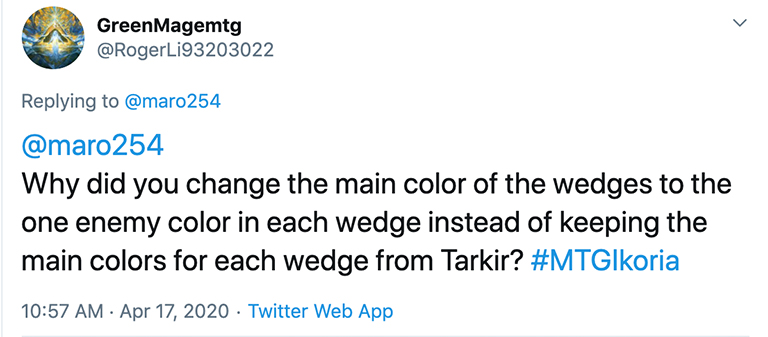
The natural place to center wedge factions is in the enemy color (for example, white in red-white-black). It's intuitively what everyone assumes, as it's the color that has the same relationship with the other colors. The only reason we didn't do that in Khans of Tarkir was that we couldn't. You see, the factions started as wedge in Khans of Tarkir and then, after time travel shenanigans, turned into ally color factions in Dragons of Tarkir. Creatively, the factions shifted but had the same core identity. That meant we couldn't center it in the enemy color, as that was the one color that disappeared between the first and last set of the block. Originally, by the way, the factions in Dragons of Tarkir were enemy colored, but it turns out that wedge sets and enemy color sets draft similarly, so we had to change it.
When we got to the plane of Ikoria, we were in a new world that didn't have the restrictions of Tarkir, so we let each wedge center itself where it felt most natural, which was the enemy color. I think this is a good thing because I like having mechanical elements that further differentiate the two wedge worlds from one another.
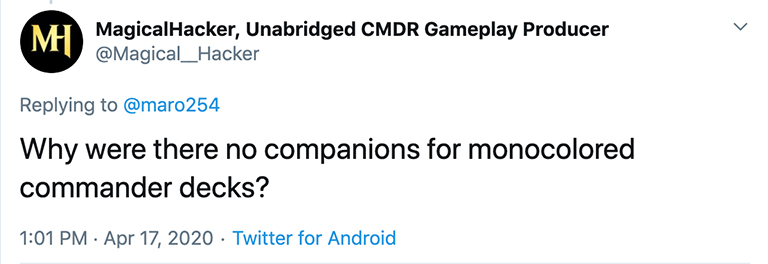
There are only ten companions in the set, so we designed them to maximize the largest number of formats. In almost every format (in both Limited and Constructed), hybrid cards can be played as monocolor, so by making them hybrid, we allowed for monocolor companions. While there are upsides to having hybrid work differently in Commander (and Brawl) than every other format, it does come with downsides, and this is one of them. Some amount of monocolor support is done through hybrid mana. In those cases, Commander will miss out.

Hybrid mana is a tool that allows us to make a mechanic have more reach in decks. For example, had all our companions been monocolored, they would have been playable in only half the decks than they would have being hybrid. Because it's a tool, hybrid is considered deciduous, which means any set that has a need for it can use it.
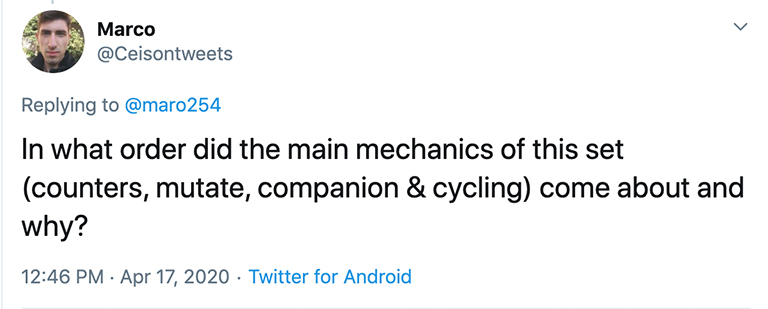
The order they got put into the set and the order they were created are actually different. Both companion and keyword counters had been part of an R&D Hackathon a month before vision design started, and one could argue the initial inkling of creature keywords came about during Amonkhet design when the punch cards were first used in a booster. The first two mechanics put into the set were mutate and keyword counters, and they entered at the same time. Remember, originally, mutate made use of keyword counters. Next, came companion. We'd been thinking about it since the Hackathon, and it seemed like a good fit for the set. Cycling was chosen as a returning mechanic that fit into the set while also meeting some of the needs of the set, so it was put into Ikoria last of the four mechanics.
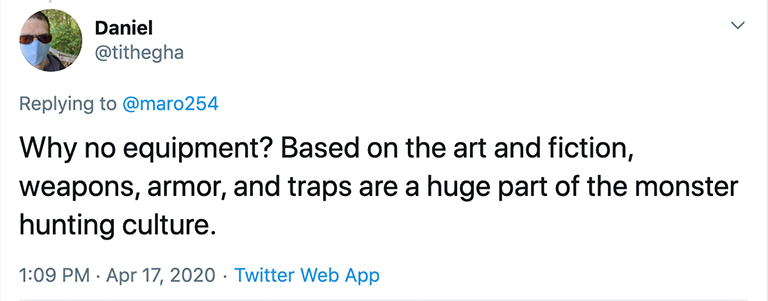
There's only so much room in a set. Yes, there are a lot of other cool things that would have fit right in flavor-wise, but we didn't have space for them. Maybe in a return to Ikoria. :)
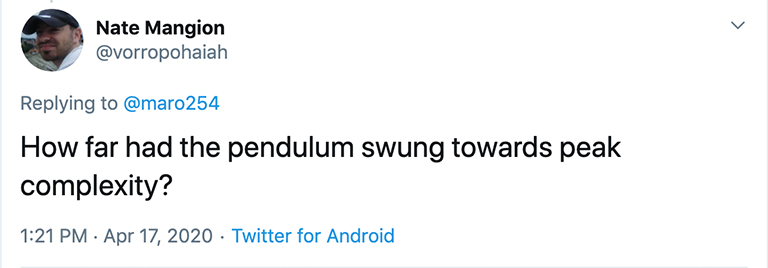
I think Ikoria is about as far as I expect complexity to swing in a Standard-legal set. It was an experiment, so maybe we'll find out it was too far. I'll be talking more about the complexity of Ikoria in next week's column.
Time's Up
That's all the questions I have time to answer today. Thanks for joining me. As always, I'm eager to hear your thoughts on any of my answers or on Ikoria itself. You can email me or contact me through any of my social media accounts (Twitter, Tumblr, Instagram, and TikTok).
Join me next week when I talk about the complexity of Ikoria.
Until then, may you bond with, fight, or run away from many monsters.
#739: The Professor
#739: The Professor
31:35
In this podcast, I talk to Brian Lewis (aka The Professor) of Tolarian Community College.
#740: Meghan and Maria
#740: Meghan and Maria
31:44
In this podcast, I talk to Meghan Wolf and Maria Bartholdi of Good Luck, High Five.
- Episode 738 Donald Smith
- Episode 737 Richard Garfield
- Episode 736 Matt Place, Part 2

